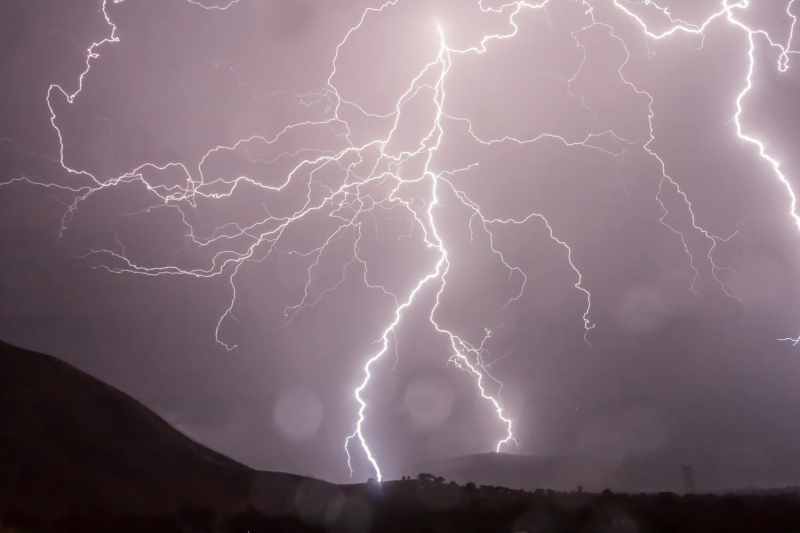
© Pixabay/Pexels
Among the many shows that Mother Nature offers us (rainbows, northern lights, eclipses or eruptions volcanic), thunderstorms are certainly one of the most breathtaking weather phenomena. These atmospheric disturbances, often accompanied by rain, lightning and thunder, can occur in any season, although they are much more frequent in the summer in our latitudes. This is good timing, since the summer season began a little over a week ago, so here is the perfect opportunity to learn a little more about thunderstorms!
How thunderstorms form?
The genesis of a thunderstorm results from a complex atmospheric alchemy, like tornadoes. This meteorological phenomenon requires the conjunction of several factors: a mass of warm, moist air near the ground, topped by a layer of drier, colder air at altitude, and a trigger that initiates the upward movement of the air. The latter can take various forms: the arrival of a cold front (transition zone where a cold air mass replaces a warm air mass) or intense daytime warming which would heat the ground, and therefore the air nearby.
When the warm air on the ground is forced to rise, whether by the relief or under the effect of intense solar radiation, a convection process begins. The colder (denser) air then descends again and this process creates ascending and descending currents.
This ascent continues as long as the parcel of air remains warmer than its surroundings. As it rises, the water vapor it contains condenses, releasing latent heat which maintains this thermal differential and promotes the continuation of the upward movement.
This phenomenon continues until the temperature of the parcel equilibrates with that of the ambient air. At this stage, the condensation of water vapor generates cumulonimbus clouds, characterized by their imposing vertical structure. Within these gigantic cloud formations, the collisions between water droplets and ice crystals generate electrical charges. When the difference in electrical charge between the bottom and the top of the cloud becomes significant enough, lightning strikes: the storm begins!
The dangers of thunderstorms and how to protect yourself from them
A thunderstorm can of course be very dangerous. Lightning is an electrical discharge of unimaginable power. Typically, its voltage is between 100 million and 1 billion volts and its current can vary from 10,000 to 200,000 amperes! It can generate temperatures higher than those of the surface of the Sun, sometimes reaching 30,000 ° C.
200% Deposit Bonus up to €3,000 180% First Deposit Bonus up to $20,000In the United States, lightning claims an average of twenty-one lives each year. The damage it causes is multiple: devastating fires, serious injuries and considerable material losses. Lightning, attracted to high points, often strikes taller structures. Water, an excellent conductor of electricity, makes activities near beaches or bodies of water particularly dangerous. In reality, no outdoor location really offers reliable protection against a thunderstorm.
The best shelters remain enclosed indoor areas: homes, stores, subway stations, in short, anything that can come your way. Stay away from windows, doors, or electrical objects. However, rest assured, the chances of being struck by lightning are very low (less than one in a million according to an Environment Canada study). However, lightning strikes the ground quite frequently. In metropolitan France, since 2000, an average of around 453,000 lightning strikes on the ground have been recorded each year, according to data from Métorage, a subsidiary of Météo France.
Myth or reality: some practical advice
There are still several misconceptions about protection against thunderstorms. Many people wrongly believe that the rubber tires of vehicles guarantee protection against lightning. In reality, it is the metal bodywork that channels the electricity around the occupants, thus ensuring their safety, if they are not in contact with the metal parts of the vehicle as we explained last year in this article. The car therefore remains a perfectly suitable choice for protection.
Another strange myth exists: that of crouching outside to make yourself smaller, which, in theory, could reduce the risk of direct lightning strikes. A very dangerous misconception, since it does not protect against ground discharges, shock waves or lateral lightning. This position even increases the chance of being struck by lightning; forget it!
To protect yourself effectively, it is strongly recommended to stay away from trees, especially those that are large and isolated. Storms can be anticipated thanks to certain warning signs, such as a sudden darkening of the sky or a sudden intensification of winds. In mountainous areas, on boats, or in airplanes, the appearance of glows at the ends of pointed objects, a phenomenon known as St. Elmo's fire, or characteristic buzzing sounds, announce the imminence of lightning.
- Thunderstorms form when warm, moist air rises from the ground, condenses, and creates cumulonimbus clouds, which in turn trigger lightning.
- Lightning is extremely powerful and can cause fires, serious injuries, and significant property damage.
- To protect yourself, seek shelter indoors, avoid tall structures, and watch for warning signs.
📍 To never miss any news from Lemon Squeezer, follow us on Google News and WhatsApp.
[ ]

